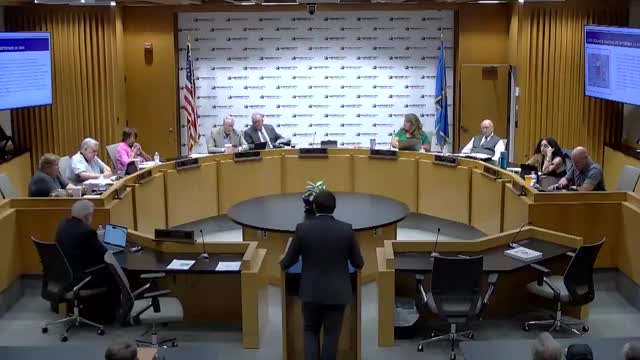City staff pushes controversial plan despite resident opposition
September 24, 2024 | Midwest City, Oklahoma County, Oklahoma
This article was created by AI summarizing key points discussed. AI makes mistakes, so for full details and context, please refer to the video of the full meeting. Please report any errors so we can fix them. Report an error »

In a recent government meeting, officials discussed a proposed amendment to the comprehensive plan concerning a high-density residential development. The staff presented their recommendation for approval, citing that the site met several siting requirements outlined in the comprehensive plan, despite significant opposition from local residents.
The comprehensive plan serves as a guiding document for land use decisions, and the future land use map is a critical component in evaluating proposals. Staff emphasized that while the proposed development would alter the character of the area, medium and high-density residential uses can coexist with single-family homes. They argued that many land use characteristics, such as hours of operation, remain similar regardless of housing type.
However, the proposal faced strong resistance from nearby residents, who expressed nearly unanimous opposition. A petition signed by over 50% of property owners within a 300-foot radius was presented, necessitating a supermajority vote for approval. Council members raised concerns about the community's needs, questioning the necessity of adding 178 new apartments when existing complexes reportedly have vacancies.
Despite acknowledging the residents' valid concerns, staff maintained that their analysis was based on the comprehensive plan's criteria. They noted that the application for the amendment was initiated by the developer and not by staff. The discussion highlighted a tension between adhering to planning guidelines and addressing community sentiment, as council members sought clarity on how the proposed change would benefit the community.
As the meeting progressed, officials considered inviting the developer to address the council's questions regarding the perceived benefits of the project. The outcome of this proposal remains uncertain, as the council weighs the staff's recommendations against the strong opposition from the community.
The comprehensive plan serves as a guiding document for land use decisions, and the future land use map is a critical component in evaluating proposals. Staff emphasized that while the proposed development would alter the character of the area, medium and high-density residential uses can coexist with single-family homes. They argued that many land use characteristics, such as hours of operation, remain similar regardless of housing type.
However, the proposal faced strong resistance from nearby residents, who expressed nearly unanimous opposition. A petition signed by over 50% of property owners within a 300-foot radius was presented, necessitating a supermajority vote for approval. Council members raised concerns about the community's needs, questioning the necessity of adding 178 new apartments when existing complexes reportedly have vacancies.
Despite acknowledging the residents' valid concerns, staff maintained that their analysis was based on the comprehensive plan's criteria. They noted that the application for the amendment was initiated by the developer and not by staff. The discussion highlighted a tension between adhering to planning guidelines and addressing community sentiment, as council members sought clarity on how the proposed change would benefit the community.
As the meeting progressed, officials considered inviting the developer to address the council's questions regarding the perceived benefits of the project. The outcome of this proposal remains uncertain, as the council weighs the staff's recommendations against the strong opposition from the community.
View full meeting
This article is based on a recent meeting—watch the full video and explore the complete transcript for deeper insights into the discussion.
View full meeting
